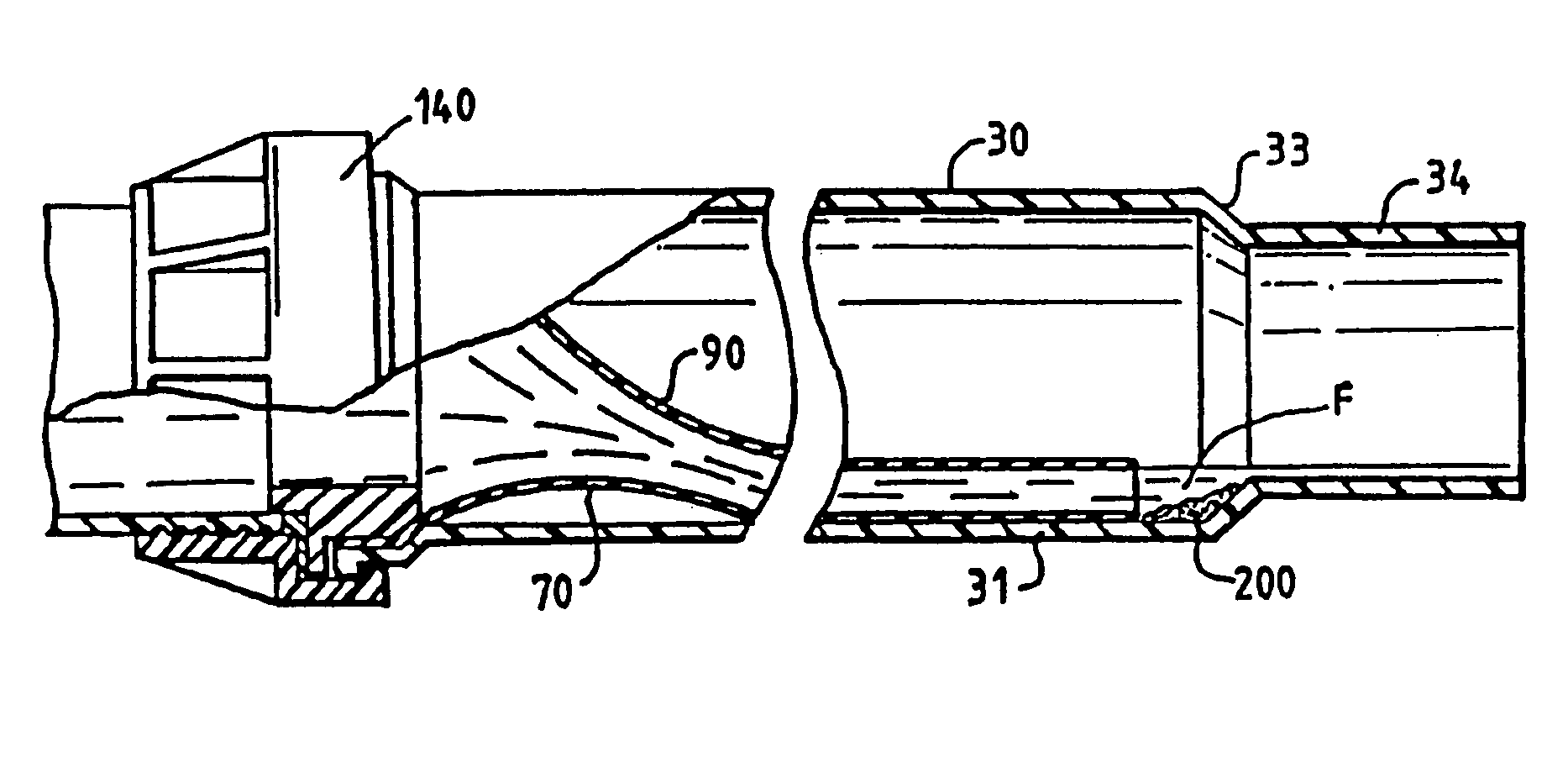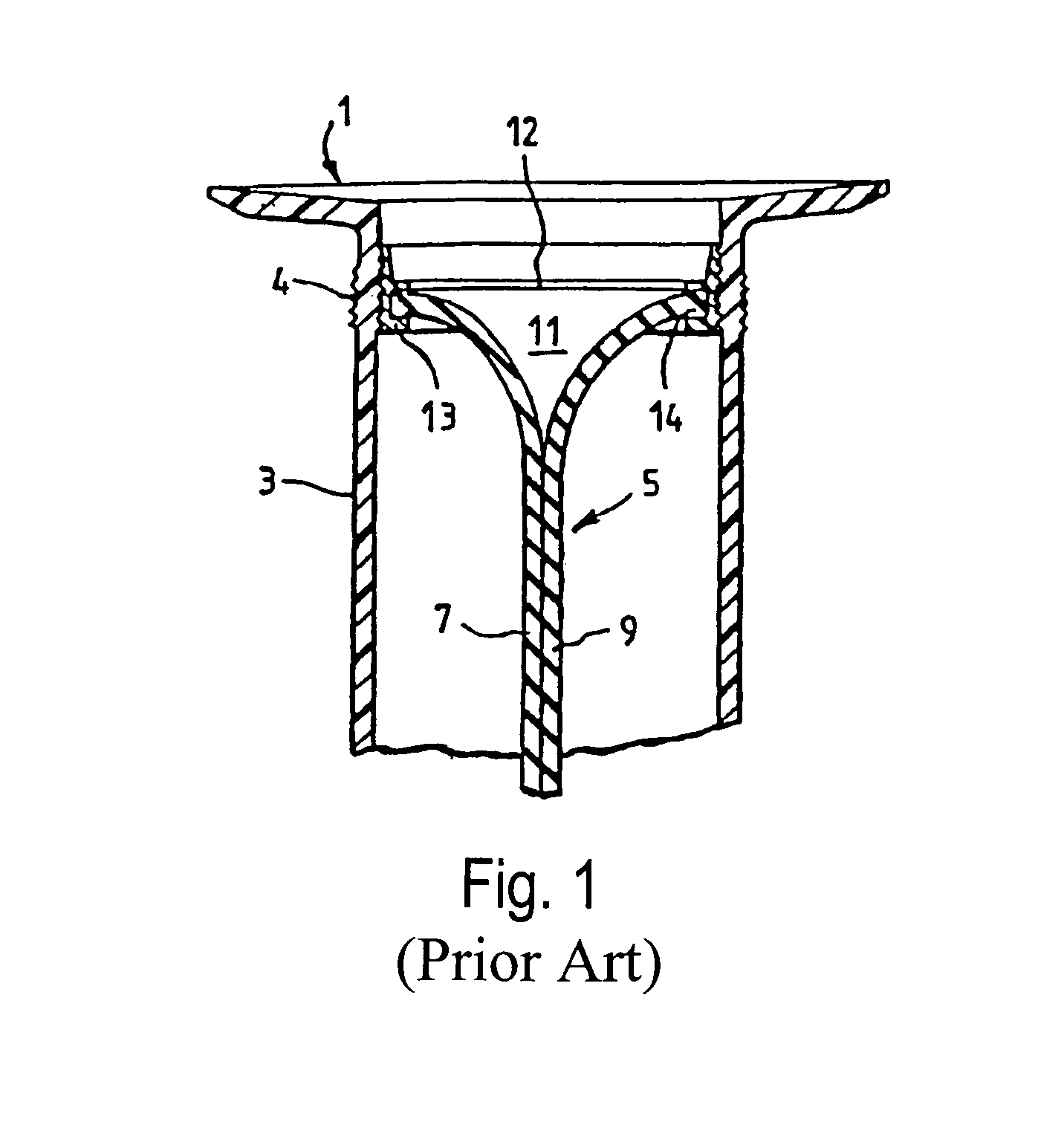Non-return device
a non-return device and water trap technology, applied in mechanical equipment, functional valve types, transportation and packaging, etc., can solve the problems of difficult installation and maintenance, occupying a significant amount of space, and conventional water traps not having the ability to admit air into the waste drainage system
- Summary
- Abstract
- Description
- Claims
- Application Information
AI Technical Summary
Benefits of technology
Problems solved by technology
Method used
Image
Examples
Embodiment Construction
[0037]FIGS. 2 and 3 show in vertical cross-section a first non-return device embodying the invention. From these figures, it will be seen that the device has general similarity with the prior art device of FIG. 1. A thin-walled lie-flat elastomeric tube 50 is located inside a pipe 30. The tube 50 comprises two opposite flat walls 70, 90 which are connected to each other, with sharp creases where the flat walls meet, extending along the length of the tube. The tube is manufactured in such a way that, in its normal relaxed state, the opposite flat walls 70, 90 lie in face-to-face contact with one another at a light pressure, due to the resilience of the material of the tube 50.
[0038]The lie-flat tubing 50 is made from silicone rubber and has a wall thickness of 0.28 mm. The walls have a width (measured in a direction perpendicular to the page in FIG. 2) of 44 mm. The tubing should be resistant to temperatures of less than 0° C. and up to 100° C. It should also be chemically resistance...
PUM
 Login to View More
Login to View More Abstract
Description
Claims
Application Information
 Login to View More
Login to View More - R&D
- Intellectual Property
- Life Sciences
- Materials
- Tech Scout
- Unparalleled Data Quality
- Higher Quality Content
- 60% Fewer Hallucinations
Browse by: Latest US Patents, China's latest patents, Technical Efficacy Thesaurus, Application Domain, Technology Topic, Popular Technical Reports.
© 2025 PatSnap. All rights reserved.Legal|Privacy policy|Modern Slavery Act Transparency Statement|Sitemap|About US| Contact US: help@patsnap.com



